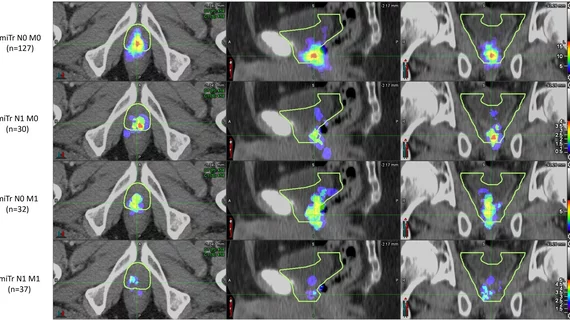PSMA PET mapping improves radiation therapy contouring after PCA recurrence
Salvage radiation therapy guidelines for patients with prostate cancer recurrence need to be updated to include findings identified on PSMA PET, according to new research shared at SNMMI’s annual conference this week.
The presentation shared the results of a study that compared PSMA PET findings of biochemical prostate cancer recurrences to contouring guidelines for salvage radiation therapy (SRT), such as those recommended by the Radiation Therapy Oncology Group (RTOG). Authors of the study hypothesized that by using PSMA PET imaging to identify recurrence locations in detail, providers could fine tune radiation therapy treatments and provide better outcomes for patients.
“Nuclear medicine and molecular imaging advances, such as PSMA PET, have the ability to guide individualized, tailored treatments that will ultimately benefit all our patients,” Ida Sonni, MD, project scientist in the Department of Radiology at the University of California, Los Angeles, said in a release about the study.
The analysis included 127 patients with prostate cancer recurrence in the prostate bed, as seen on PSMA PET/CT, after radical prostatectomy. Two nuclear medicine physicians identified areas of recurrence on imaging, while four radiation oncologists (blinded to the findings) determined the clinical target volume using guidelines from RTOG. Target volumes were then compared to the locations of recurrences.
For 41% of patients, guidelines for salvage radiation therapy covered the full extent of the disease. In 46% the recurrences were only partially covered and in 13% the recurrence locations were completely outside of the clinical target volume.
“This study has the potential to redefine prostate bed contouring guidelines to improve the therapeutic ratio for patients receiving postoperative radiotherapy,” Sonni said.
In the study abstract, the authors concluded that their findings should be considered when defining radiation therapy contouring guidelines.
Link to abstract: PSMA PET mapping of postoperative local recurrence and impact on prostate fossa contouring guidelines for salvage radiation therapy
Related to PSMA PET:
New radiohybrid PET imaging agent increases detection of prostate cancer recurrence
PSMA PET/CT better detects prostate cancer spread, long-term outcomes over conventional imaging
FDA approves new radioligand therapy for PSMA positive metastatic prostate cancer
Cutting radiation exposure in half during PET/CT using virtual CT scans

